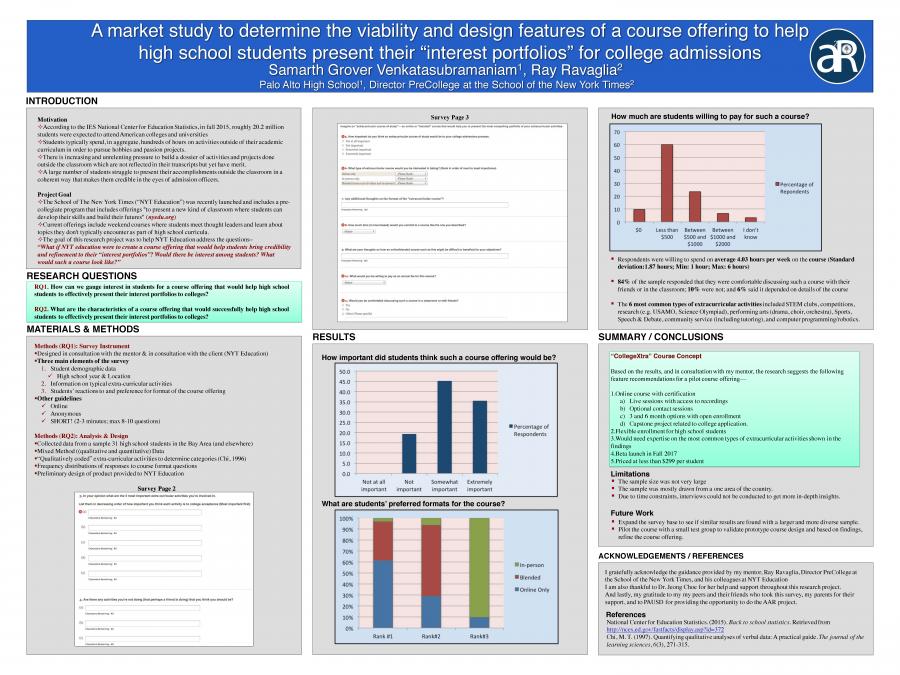Market Viability Analysis of an Online Course Geared Towards Refining High School Students' “Interest Portfolios” by Samarth V.
Presentation
Summary
Every year, hundreds of thousands of high school children go through the labor-intensive college application process that involves showcasing their passions and interests. Students typically spend, in aggregate, hundreds of hours on activities outside of their academic curriculum in order to pursue hobbies and passion projects. These encompass sports activities in or out of school, volunteer work that spans a variety of contexts and settings, participation in academic clubs and contests, debate and forensics, drama and theater, internships in industry settings, research activities in laboratories and elsewhere, and pursuing personal hobbies such as art & crafts, woodworking, programming, do-it-yourself making, playing a musical instrument or singing, among several others. When it comes time to “package” one’s personal story for the college application process, students are often at a loss as to how to share this information in a coherent way. What if an out-of-school educational organization were to create a course offering that would help students bring credibility and refinement to their “interest portfolios”? This research project aims to assess the viability of such course offering, who the target student audience would be to market such a course to, and how such a course should be designed. This research analyzes data from The School of The New York Times, that was recently launched and includes a pre-collegiate program that includes offerings "to present a new kind of classroom where students can develop their skills and build their futures" (nyedu.org). Currently their offerings include weekend courses where students meet thought leaders and learn about topics they don't typically encounter as part of high school curricula, a summer academy in New York City, and single-day or multi-day symposia that involve discussions about big ideas and innovations shaping the world and also other topics that encompass conversations about pertinent to students' futures such as college admissions and preparation, and career opportunities. This research will entail designing surveys to gauge student interest in such an offering. Data will be gathered from surveying roughly 400 high school students across two geographical regions of the country - the San Francisco Bay Area and the New York tri-state region. Data will be analyzed to answer the research questions around determining the characteristics of the target population for such a course. A preliminary model for such a course will be “field-tested” with potential instructors, mentors, college counselors, college admissions officers, supervisors of high school interns. The final outcome of the project will be a report that shares data from student surveys and reactions to a preliminary course design from various stakeholders.

